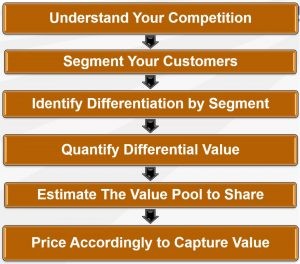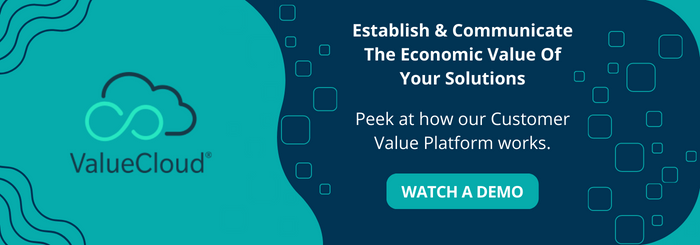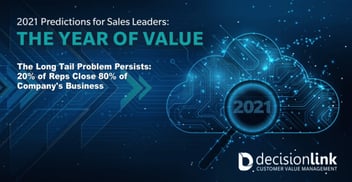Value-based Pricing and Selling Are Joined at the Hip

For years organizations have tried to bridge marketing and sales functions. One working without the other is a no-go. I argue it is the same with sales and pricing. You cannot design and execute successful pricing programs without having the sales forcefully on board. Similarly, you cannot be successful at sales without clear pricing tactics governed by rules, guidelines, and transparent margin data. I posit that sales and pricing are joined at the hip. That relationship is even more critical when discussing the topics of value-based pricing and value-based selling. Let us consider the following:
Value-based Selling definition: “Value-based selling is the term for the overarching process of presenting your product or service in terms of the value it creates for customers. Value-added selling is the specific selling process during which the salesperson takes steps to provide customers with value at every stage of the selling process”.[1]
Value-based Pricing definition: “Value-based price is a pricing strategy which sets prices primarily, but not exclusively, according to the perceived or estimated value of a product or service to the customer rather than according to the cost of the product or historical prices”. [2]
The connecting element in both definitions is the concept of customer value.
There you have it! Case closed.
Value-based Selling without Value-based Pricing
The goal of value-based selling is to justify and extract a price premium. We enter in value conversations with accounts and convince them of the superiority of our offer and how much value they are going to receive from us. To do this, we must have a clear understanding of what our differentiators are, what incremental benefits we bring versus the competition, and how much financial value we can share with and realize for the accounts. This cannot be done without having done customer value models for the specific offer and the customer segment. In fact, this exercise represents steps 3, 4 and 5 of the value-based pricing processes which counts six steps in total as shown below. Value-based selling without quantifying value might still work. But it loses its power, especially when facing the almighty procurement teams and their bargaining tactics.
[1] (Value Selling: The Ultimate Guide to Value-Based & Value-Added Selling (decisionlink.com).
[2] Wikipedia, 2021
The 6 Steps of Value-based Pricing

Value-based Pricing without Value-based Selling
Similarly, doing value-based pricing without executing on the outcome in the selling process is a waste of energy. Customer value propositions and models might be well defined, but they are stuck in static PowerPoint slides that might or might not be used by sales teams. Customer value is what ties the pricing and selling process together. That specific tie needs to be put in action mode and operationalize in the selling process. When the connection does not exist, sales teams revert to discounting and managing customer requests for concessions.
Practical Recommendation to Energize the Pricing and Sales Teams
I propose seven ways to connect the sales and pricing teams to work in an integrated value-based approach:
- Adopt & learn value quantification methods. There are several well-known methods, including total cost of ownership (TCO), return on investment (ROI), business value assessment (BVA), and economic value estimation (EVE®) models. Get started learning about these and ask for help from experts (pricing and value engineering professionals) to put together a quick training module for your marketers and sellers.
- Create strong quantified business cases working together. It is essential to focus on jointly creating very strong business cases bringing the hard methodology of value quantification with the soft knowledge from the sellers. That combination of skills is very powerful and extremely customer-focused. So, you build the first models and BVAs together and then you move to a systemic and automated process using the ValueCloud! ®
- Understand your differentiation in terms of economic and financial benefits vs. competition. Part of the modeling of differentiation value is to know your competitors and how you compete against them. Here too both sellers and pricers need to work closely together with some help from your friendly competitive intelligence experts. They can agree on basic assumptions, value hypotheses, and core competitive differentiators. The fact that sales and pricing are working together, with possible other functions, can help accelerate the much-needed level of alignment and cooperation.
- Focus on tracking delivered value that can measure jointly with customers. Measuring your financial contribution to your customers is part of the selling process. Often, vendors forget that the value needs to be delivered, tracked, and benchmarked against the promises you made. There are tools and methods you can acquire quickly to put this process in place such as Six Sigma, value trackers, and value dashboards. There is software you can deploy to professionalize this step and I recommend against trying to do this manually. (Learn more here via DecisionLink).
- Embed hard financial numbers into the value-selling programs. Buyers are well-equipped with numbers, hard facts, and a long laundry list of what went wrong. Sellers must be prepared the same way. Business value assessments and value propositions need to have hard savings and gains numbers. It is hard numbers against hard numbers as we enter a negotiation dance. Pricing teams are wired this way and can coach the sales team to think in terms of quantified value.
- Integrate customer and financial value in your key account plan. When you have completed steps 1-5, make sure that all the relevant data is tracked and added to the key account plan template and in your CVM and CRM system. Your sellers need to become value merchants. They need to sell and negotiate on value. You do not have the luxury of waiting six months to put this in place. Now is the time to become a trusted partner in your space and to sell hard customer value.
- Train your front lines in customer value messaging and value selling. Like point 1, you must train your sellers on the art and science of value selling and negotiating for value. Part of the training is to get your pricing and value engineering team to spend time on how to calculate value, how to use hard numbers in the value conversations, how to respond to value and price objections, and how to exchange price and value.
Whether you have a pricing team, a value engineering team, or a customer value team, they need to be joined at the hip with the sales team. That connection needs to be strong in the context of value extraction and growth. Customer Value Management is a team sport. Marketing, pricing, value engineering, business consulting, customer success, and sales all have a role to play. The right platform acts as the anchor point to get everyone to engage.
Bio

Stephan Liozu (www.stephanliozu.com) is the Founder of Value Innoruption Advisors (www.valueinnoruption.com), a consulting boutique specializing in industrial pricing, digital business, and value models, and value-based pricing. Stephan has 30 years of experience in the industrial and manufacturing sectors with companies like Owens Corning, Saint-Gobain, Freudenberg, and Thales. He holds a Ph.D. In Management from Case Western Reserve University, and has written several books, including “Dollarizing Differentiation Value” (2016) and “Value Mindset” (2017).

 ValueCloud
ValueCloud
.png?width=118&height=76&name=Rectangle%20(3).png) ValueCloud Ignite
ValueCloud Ignite
.png?width=92&height=92&name=Rectangle%20(4).png) Free Assessment
Free Assessment
.png?width=100&height=100&name=Rectangle%20(5).png) Watch a Demo
Watch a Demo
.png?width=82&height=96&name=Rectangle%20(6).png) Value Calculator
Value Calculator

.png?width=62&height=51&name=Group%2010%20(1).png) Marketing
Marketing
 Sales
Sales
 Customer Success
Customer Success
 Engage Prospects
Engage Prospects
 Win Deals Faster
Win Deals Faster
 Retain Customers
Retain Customers
.png?width=62&height=62&name=Rectangle%20(8).png) Adopt and Scale
Adopt and Scale
.png?width=54&height=54&name=Rectangle%20(9).png) Cybersecurity
Cybersecurity
 Healthcare
Healthcare
.png?width=54&height=54&name=Rectangle%20(10).png) IT & Software
IT & Software




